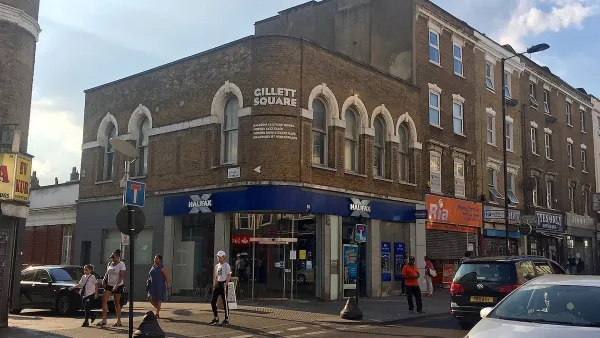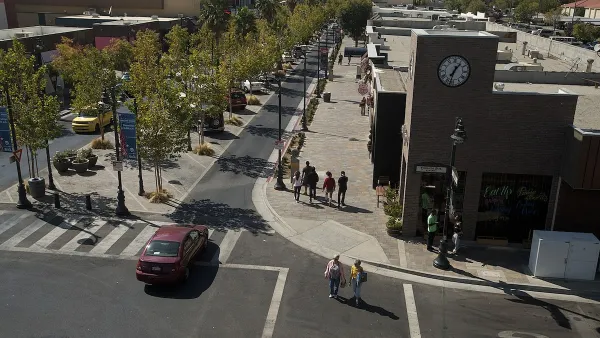Urban planners are obligated to sensible and efficient development, but can also take community ideas into account. By prioritizing concerns and thoughts and keeping the future in mind, planners can develop optimal urban communities.

Urban development must support the people and businesses in it. Currently, nearly 60 percent of people worldwide live in a city, and this number will likely grow another 10 percent by 2050. With so many humans concentrated in one area, urban planners need to listen to and anticipate the needs of residents.
How can an urban planner include community ideas in their developments? Here is a look at how to gather suggestions and introduce helpful infrastructure that will aid the growth of cities in the future.
Start by Gathering Ideas
The most straightforward way to include community ideas is to ask the people what they need. Jumping into a design without inquiring about any necessary additions can make a space unhelpful or inaccessible. It is essential to start by listening to locals and seeing what thoughts they have about improving the area.
Urban planners can accomplish this by sending out written forms or creating a digital survey—the latter might be helpful for the ease of gathering the collected data, specifically when optimized for respondents. However, not everyone has access to a computer, so it is essential to provide a physical option. It could also be beneficial to hold a town hall where residents can offer their opinions about the proposed development.
It can also be beneficial at this stage to include any current thoughts from the planner’s point of view and explain why these decisions are advantageous. Doing so with accessible language and visuals can help the community learn about what changes will happen and potentially spur more considerations from them.
Prioritize Common Thoughts and Concerns
Once the team gathers enough information from local residents, they must organize what they can accomplish based on common interests. For example, there may be a few people interested in repaving an area, while others would like increased space for a community garden. While an urban planner should try their best to address each desire, being totally comprehensive is difficult with logicistical budgets and timeframes.
However, there are some infrequent concerns they should listen to. Perhaps someone who uses a wheelchair wants to ensure they can safely travel through the city. If the area is developing into a smart city, others might have worries about the potential of cybercrime within technology-enabled vehicles. It is the urban planner’s responsibility to incorporate these concerns into their plans.
Design for the Future
When laying out a new urban development, it is vital to consider the many ways the residents could use it. Perhaps the new space could generate revenue by hosting local festivals or events. What could make the area beneficial for multiple uses? Would including benches and stalls for local dining increase people’s interest in the area? Anticipating these ideas, along with designing for year-long use, could encourage more innovation from the public.
Additionally, it behooves urban planners and residents to incorporate sustainability into a space. According to the United Nations, cities produce 75 percent of the world’s greenhouse gas emissions. How could the new development help reduce this percentage? Including trash and recycling receptacles around the space, for example, is one way to mitigate the impact that the urban development has on the environment.
Urban Planners Must Include Community Ideas in Their Plans
The design of an urban development has many moving parts. To make things easier, urban planners should listen to and include community ideas in their planning. Doing so helps them come up with effective layouts and ensure residents have a use for every part of the space. Thus, it is crucial to poll the locals, prioritize their concerns, and design with the near and far future in mind.

Maui's Vacation Rental Debate Turns Ugly
Verbal attacks, misinformation campaigns and fistfights plague a high-stakes debate to convert thousands of vacation rentals into long-term housing.

Planetizen Federal Action Tracker
A weekly monitor of how Trump’s orders and actions are impacting planners and planning in America.

In Urban Planning, AI Prompting Could be the New Design Thinking
Creativity has long been key to great urban design. What if we see AI as our new creative partner?

King County Supportive Housing Program Offers Hope for Unhoused Residents
The county is taking a ‘Housing First’ approach that prioritizes getting people into housing, then offering wraparound supportive services.

Researchers Use AI to Get Clearer Picture of US Housing
Analysts are using artificial intelligence to supercharge their research by allowing them to comb through data faster. Though these AI tools can be error prone, they save time and housing researchers are optimistic about the future.

Making Shared Micromobility More Inclusive
Cities and shared mobility system operators can do more to include people with disabilities in planning and operations, per a new report.
Urban Design for Planners 1: Software Tools
This six-course series explores essential urban design concepts using open source software and equips planners with the tools they need to participate fully in the urban design process.
Planning for Universal Design
Learn the tools for implementing Universal Design in planning regulations.
planning NEXT
Appalachian Highlands Housing Partners
Mpact (founded as Rail~Volution)
City of Camden Redevelopment Agency
City of Astoria
City of Portland
City of Laramie






























